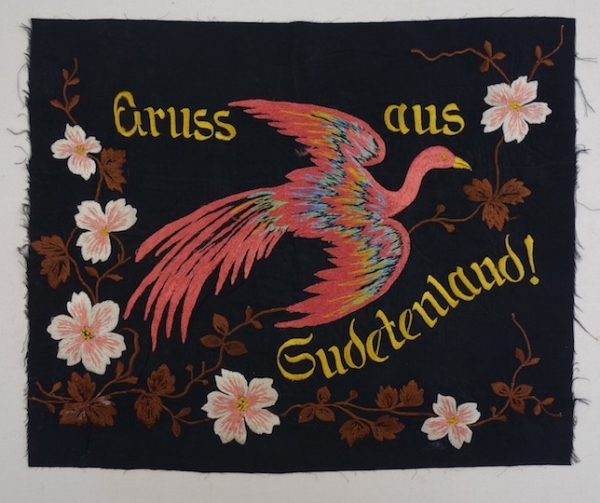In 1933 Adolf Hitler became Chancellor of Germany. He soon abolished democracy, pursued a policy of racial and religious discrimination, and launched an extensive programme of rearmament.
In March 1938, Germany annexed Austria and subsequently claimed Sudetenland, which was part of what was then Czechoslovakia and an area with a dominant German population. At a conference in Munich, in September of the same year, Germany was granted the possession of Sudetenland in exchange for guarantees of peace. In October German forces crossed the Czechoslovakian border.
Despite promises made in Munich, Germany invaded Poland in September 1939, ushering in World War II. At the beginning of the Second World War, the Netherlands was officially a neutral state, nevertheless the country was invaded by Nazi Germany on 10 May 1940. After the bombing of Rotterdam on 14 May, the Dutch troops surrendered to the Germans on 15 May.
 Simple, round wooden brooch from the Netherlands, dated 1940 or slightly later, with a depiction of a grave, a helmet, two Dutch flags and a text (TRC 2019.2292). The brooch commemorates those who were killed when the Germans invaded the Netherlands in May 1940. For more information, click on illustration.The Dutch government and the royal family fled to London. Queen Wilhelmina (reign: 1890-1948) subsequently remained in the UK, while her daughter, Princess Juliana, was sent to Canada with her children.
Simple, round wooden brooch from the Netherlands, dated 1940 or slightly later, with a depiction of a grave, a helmet, two Dutch flags and a text (TRC 2019.2292). The brooch commemorates those who were killed when the Germans invaded the Netherlands in May 1940. For more information, click on illustration.The Dutch government and the royal family fled to London. Queen Wilhelmina (reign: 1890-1948) subsequently remained in the UK, while her daughter, Princess Juliana, was sent to Canada with her children.
The first year of German occupation in the Netherlands was fairly calm, at least for the majority of the population. From June 1941, however, the regime became increasingly restrictive: oppression intensified, deportation of the Jewish community commenced, and German control over all aspects of life increased.
By 1941, silver coins with the depiction of Queen Wilhelmina were being replaced by zinc coins with a different obverse side. The silver was melted and used in the German war industry.
In the second half of 1944, American, British, Canadian and Polish troops liberated much of the south of the Netherlands. The west and north of the country were still occupied during the winter of 1944 (the "Honger Winter"). This part of the country was liberated after the surrender of the German troops on 5 May 1945.


